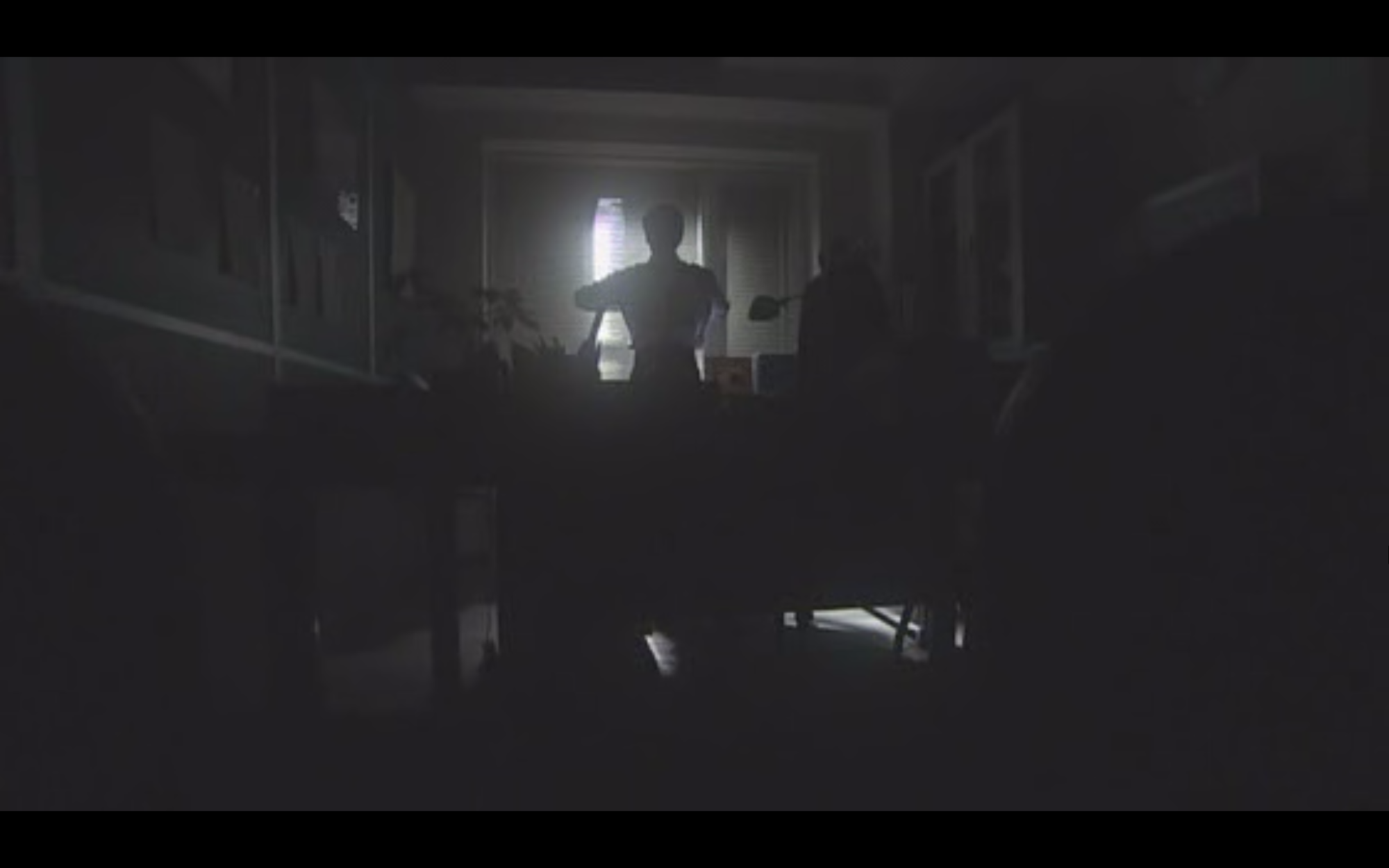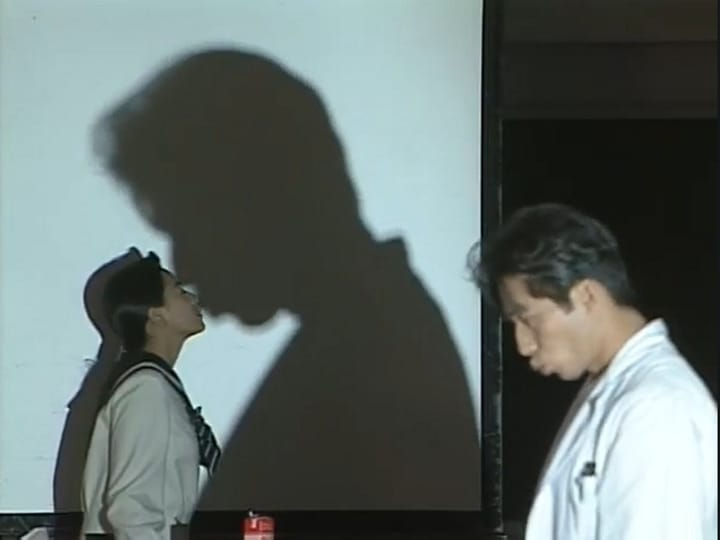A Doctor is Not God: The Great White Tower
In which we investigate a classic 2003 Japanese television drama, and learn about hubris.

Welcome to ANIWIRE! This week we’re talking about the medical drama The Great White Tower, specifically the 2003 adaptation for Fuji TV. Before that, though, here’s some recent news in the anime and manga world.
News
- A new trailer for Kiyotaka Oshiyama’s upcoming adaptation of Look Back was released on April 16th. It’s the best birthday present I could have asked for. I found myself crying just watching this trailer…the movie will probably destroy me.
- In other news, we’re getting an international winter release for Naoko Yamada’s upcoming film Your Colo–I mean, The Colors Within. Very excited for this one as well.
- I also like the aesthetic of A Few Moments of Cheers, an upcoming CG anime film set to premiere in Japan on June 14th. Happy to see folks in Japan playing with differing approaches to 3D animation.
- The long-awaited film Yuri on Ice!!! Ice Adolescence was sadly canceled. For more on what may have happened, I recommend reading Humberto Saabedra’s piece.
- The popular web comic series The Guy She Was Interested In Wasn’t a Guy at All was licensed by Yen Press for release in October. This one’s a fan favorite, though it’s a bit too fluffy for me…
- Ten years later, fans of the bizarre card game anime selector infected wixoss have at long last been given some food. In case folks forgot, this is a series in which the heroine at one point puts a tiny blanket on a playing card in which the show’s villain is trapped (the villain is also her girlfriend.)
Bookmarks
- For Anime Herald, Madeline Blondeau wrote about the rise and fall of Jojo’s Bizarre Adventure fandom in the United States.
- Also at Anime Herald, Borealis Capps sought to answer the most important question of all: where are all these golf anime coming from?
- For The Comics Journal, Tegan O’Neil wrote about Frank Millar’s influential (and deeply flawed) graphic novel Ronin.
- Kastel wrote about Hayasaki no Kuroyuri, a visual novel about text parsers and heteronormativity.
- Lucas Pope spoke to the staff of SaGa: Emerald Beyond about a variety of things, including Vegeta somehow.
- D. Merrill wrote about Isao Takahata’s classic anime adaptation of Anne of Green Gables.
- Amelie Doree put out another massive video, this time about the visual novel Extravaganza: “a dark, brilliant and imperfect feminist horror saga.”
What I Wrote
- For Crunchyroll News, I wrote about science fiction writer Toh Enjoe’s contributions to the free-wheeling anime series Space Dandy.
- Also for Crunchyroll News, I wrote about Masaaki Yuasa’s anime adaptation of Ping Pong–and how its circumstances parallel those of Taiyo Matsumoto’s original comic serialization.
- Finally, for Crunchyroll News, I interviewed Japanese to English translator HakanaiBlue about their experiences translating independent Touhou games.
- For Comics Beat, I reviewed the first episode of the original anime series Jellyfish Can’t Swim in the Night.
- Also at Comics Beat, I've started an ongoing column with several other talented writers that is called Beat's Bizarre Adventure. I wrote about Nausicaa of the Valley of the Wind for the first installment. (My colleagues covered the great Webtoon Whale Star as well as and the monster battle manga Legendz.)
- Over on the podcast Unpacking the Shelf, my friend Alex and I chatted with Fantom Comics co-manager Jake about Taiyo Matsumoto’s new series Tokyo These Days. More recently, Alex and I discussed the roguelike Shiren the Wanderer: The Mystery Dungeon of Serpentcoil Island.
AMV of the Week
Here’s "Real Ais Realize Real Lies" by keiichiface.
In the first episode of The Great White Tower, doctor Shuji Satomi asks his colleague Goro Zaizen for a favor. Satomi suspects that his boss has misdiagnosed one of his patients. Could Zaizen take a look? While examining the medical data over Satomi’s shoulder, Zaizen sees that the patient has both early-stage stomach cancer and pancreatic cancer. A rare case. He decides to operate on her personally. But when Satomi requests that he break the news to the patient gently, he instead tells her outright. If I do nothing, he says, you will die. Instead I will cut you open and save your life. You have my word.
Later, Satomi asks Zaizen: why were you so cruel to her? And why did you promise that she will survive the operation? Could anybody guarantee such a thing? You’re overthinking it, Zaizen says. The patient must accept that the doctor knows best. She put her life in my hands, not the other way around.
To which Satomi replies: “A doctor is not God.”

The Great White Tower is a story about power. Not just the power to save lives, but the power to determine which lives are worth saving. Goro Zaizen and Shuji Satomi work at Naniwa University Hospital in Osaka. It is a place where the wealthy and privileged receive top treatment while the terminally ill are cast from their beds. Doctors fight over cases while their wives play politics in their evening clubs. Only those who are strong and cunning survive.
Goro Zaizen climbs the career ladder in search of wealth and influence. Shuji Satomi throws away career opportunities to be true to his principles. The two of them disagree on everything except for what is most important: a doctor’s responsibility to save lives. Zaizen believes that the more power and privilege he has, the more lives he can save. Satomi worries that politics are a mere distraction from the important part of his job. Yet Zaizen’s careerist ambitions make enemies of his superiors. Satomi’s idealism brings him into conflict with the system he abhors. They cannot help but live in a society.

The Great White Tower is a story that has been told many times. First as a novel by prolific writer and journalist Toyoko Yamasaki. Then as a 1966 film directed by Satsuo Yamamoto and starring Eijiro Tono. Since then there have been six television adaptations including a South Korean remake. The 2003 version, which I discuss here, is one of the best known. It’s a cult classic among J-drama fans and is highly rated on Douban. Unfortunately it’s completely unknown in the United States. As far as I know, the 2019 version isn’t even available for streaming.
My first impression as an anime fan is that Naoki Urasawa must have been familiar with this story before drawing Monster. In case you haven’t heard of that series (see here) it begins as a medical drama about a Japanese man dealing with corrupt hospital politics. It’s easy to connect the dots between Dr. Kenzo Tenma and the incorruptible, shaggy-haired Shuji Satomi. I’ll admit to having a weakness for this type of character–I’ve spent the past several years weighing my own idealism against institutional hypocrisy. I love a fantasy of someone on screen putting his foot down and saying, “I won’t let you get away with this.”

But then The Great White Tower doesn’t let Shuji Satomi off the hook either. He spends so much time at work that he rarely has time to spend with his wife and sickly child. Meanwhile, his efforts to do the right thing at his workplace are curtailed by his lack of institutional power. The most that he can ever be is a thorn in somebody else’s side. In reality it’s Zaizen, slick climber that he is, who poses the greatest danger to the status quo at Naniwa University Hospital. That’s why everybody has their knives out for him.
It’s fun to read Zaizen as a version of the television antihero that became a staple for years in the United States. He’s spectacularly good at his job. He’s charismatic enough that the viewer roots for his success, but also just pathetic enough that they might feel sorry for him. The women in his life influence his direction but never quite escape his magnetism. Zaizen was conceived in an entirely different context than that which gave birth to Tony Soprano and Don Draper. But when he is given a fancy lighter and effectively told “this lighter represents your willingness to compromise your morals for the sake of the future,” we understand just what he’s giving up every time he takes it out to light a cigarette.

The Great White Tower takes itself very seriously. Naniwa University Hospital is presented in stark white through which shines the harsh light of the sun. When a character walks into, or out of, the sunlight, it’s always a big deal. Not to mention that when Zaizen is first introduced, we see his hands repeating the motions of an upcoming surgery in total darkness. Every episode closes out with a cover of “Amazing Grace” just so that the viewer doesn’t miss the point: this is a story of absolute good and evil.
This is often a show about big closeups and low angle shots. The viewer knows just how important any one character is in a scene by how their face and body fills the frame. Better to see just when and where Zaizen’s mask cracks. Some of the show’s best scenes, though, take the opposite approach. Zaizen and his colleagues race up the stairs to meet the president of the hospital at the top. Together they walk down the hallways in an amorphous mob. This is hospital as system, greater than any one person’s ambitions. A place built by and for humans that could only ever diminish them.

At the end of the first episode, Zaizen goes back on his promise to Satomi. Find somebody else to treat that patient, he says. If your boss is shamed by me, I’ll never be promoted. But you don’t understand, Satomi says. The patient’s life is in the balance. If we do nothing, she will die!
To which Zaizen replies, “a doctor is not God.” He lights a cigarette with his symbolic lighter. The Great White Tower is never subtle, but it knows how to pull off a snappy line.

